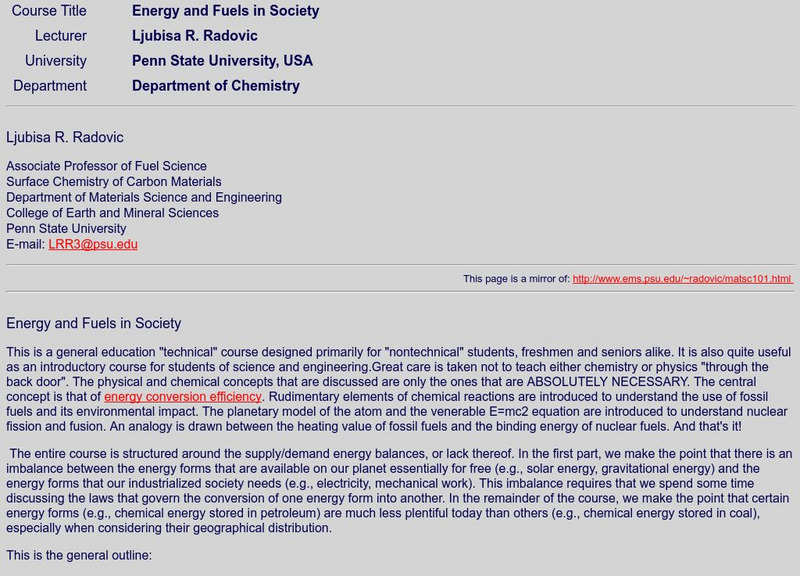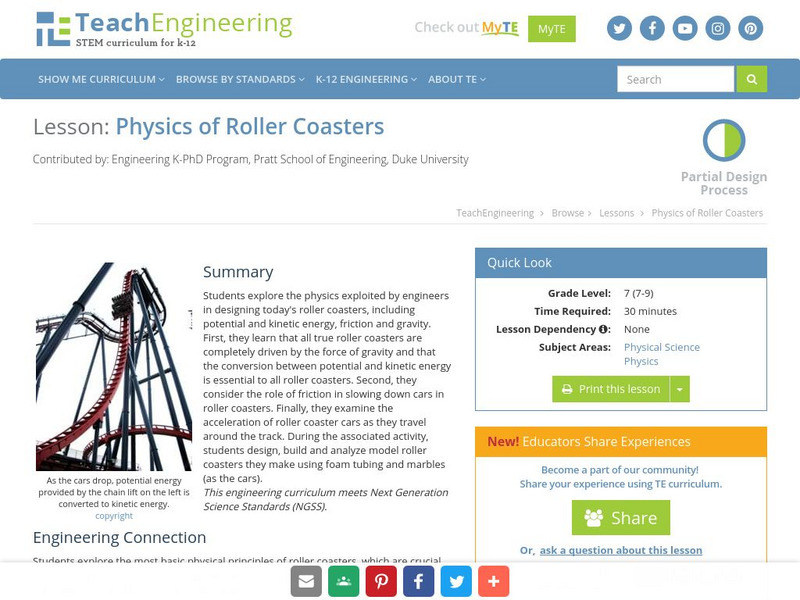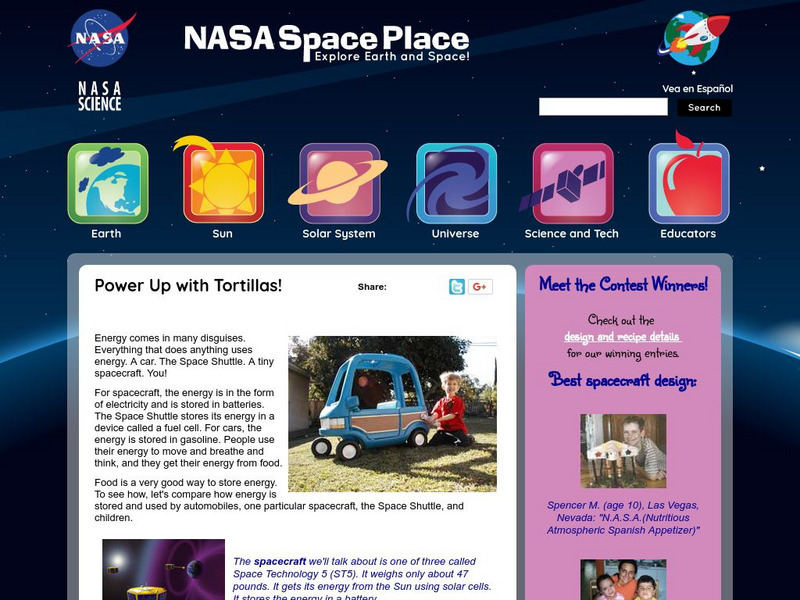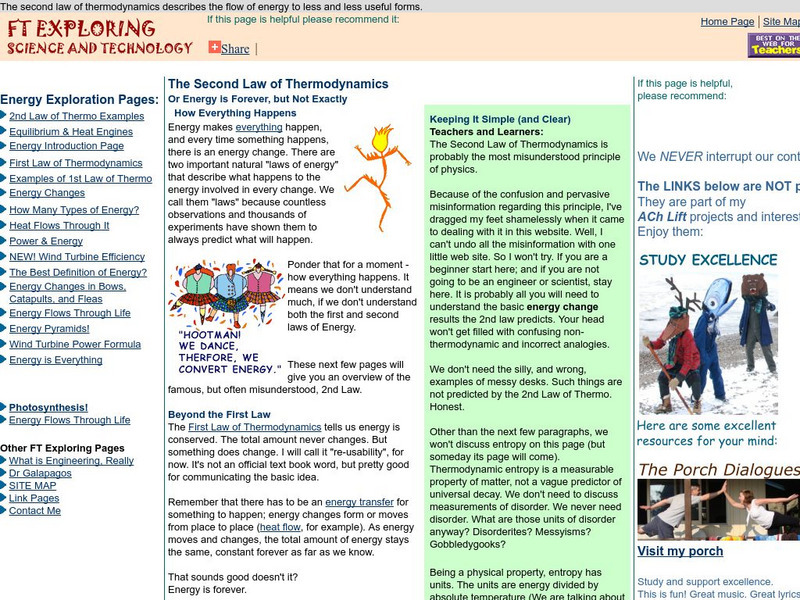Other
Centre for Alternative Technology: Information Service
Information and advice on sustainable living. Provides data for people that might want to use technology in the construction or conversion of their home into an environmentally sustainable structure.
Simon Fraser University
Chem1 Virtual Textbook: Electrochemical Energy Storage and Conversion
As part of the General Chemistry Virtual Textbook, this site examines a variety of topics related to electrochemistry. In particular, this site explores a range of topics related to batteries and fuel cells.
The Franklin Institute
The Franklin Institute Online: Balloon Blow Up
In this simple experiment from the Franklin Institute, students observe the conversion of stored energy into work.
Math.com
Math.com: Energy/work Equivalents
A tool for converting values between units of measurement for energy and work.
Other
Unit conversion.org: Online Unit Converter
Need a unit converter? Links to the most common converters provide access to the answers you need quickly.
Wikimedia
Wikipedia: Mitochondrion
This encyclopedia article from Wikipedia on mitochondrion describes its function, structure, the energy conversion process, and its use in genetic studies. An illustration is also provided.
Other
Dupont: Make Your Own Water Turbine
Students will create their own water turbine to demonstrate the use of water as a renewable energy source. Included is a detailed lesson plan, a video of the activity, and assessment questions.
The Environmental Literacy Council
Environmental Literacy Council: Temperature
The difference between heat and temperature is explained, followed by a discussion of temperature and its relation to global climate change. Gallileo Galilee, Daniel Gabriel Fahrenheit, Anders Celsius, and Carl Linnaeus are mentioned in...
Concord Consortium
Concord Consortium: How Can a Small Spark Start a Huge Explosion?
In this module Activity 4 investigates How are bonds formed and broken? This activity explores the relationship between energy and the formation and breaking bonds, using the ideas of energy transfer and conversion.
Cuemath
Cuemath: Temperature
The article explains temperature. Specifically, you will learn about the temperature scale, temperature scale conversions, and the types of instruments used to measure temperature. Included are solved examples and interactive problems...
Discovery Education
Discovery Education: Build Your Own Perpetual Motion Machine [Pdf]
A activity for students to explore the conversion of energy from electrical energy to kinetic energy by constructing a homopolar motor. Also by constructing the motor, students can investigate magnetism, electricity, and RPM.
Other
National Engineers Week Foundation: Hearing the Light
Students learn how laser communication systems are built by observing how sound can be encoded into, and transmitted by a light beam.
Other
Lesson Plan: Generate Your Own Hydropower [Pdf]
In this online lesson plan, students will generate their own hydropower demonstrating how power is converted to electricity.
Other
Penn State University: Energy and Fuels in Society
This site, which is provided for by the Penn State University, gives twenty one chapters of charts, graphs, and information on synthetic fuels.
CK-12 Foundation
Ck 12: Nuclear Radiation
[Free Registration/Login may be required to access all resource tools.] In this module, students will understand how radioactivity involves a change in the nucleus of a radioisotope and calculate the conversion of mass to energy...
CK-12 Foundation
Ck 12 Exploration Series: Simulations: Physics: Heat Engine
[Free Registration/Login Required] Having trouble understanding the energy transfer in heat engines? This simulation allows students to learn about the conversion of heat energy to mechanical energy in the context of heat engine.
TeachEngineering
Teach Engineering: Rolling Blackouts & Environmental Impact
The goal is for the students to understand the environmental design considerations required when generating electricity. The electric power that we use every day at home and work is generated by a variety of power plants. Power plants...
TeachEngineering
Teach Engineering: Physics of Roller Coasters
Students explore the physics utilized by engineers in designing today's roller coasters, including potential and kinetic energy, friction, and gravity. First, students learn that all true roller coasters are completely driven by the...
TeachEngineering
Teach Engineering: Make Your Own Temperature Scale
Students learn about the difference between temperature and thermal energy. They build a thermometer using simple materials and develop their own scale for measuring temperature. They compare their thermometer to a commercial...
Khan Academy
Khan Academy: Intro to Photosynthesis
Discussion of the conversion of light energy to chemical energy through the life-sustaining process of photosynthesis. Explores the reactions of photosynthesis, where they take place, and their ecological importance.
NASA
Nasa: The Space Place: Power Up With Tortillas!
This site from NASA provides The Space Place which gives a great explanation of energy sources for young readers using the space shuttle, cars, and our human body as examples.
Khan Academy
Khan Academy: Thermodynamics Article
Thermodynamics is a very important branch of both physics and chemistry. It deals with the study of energy, the conversion of energy between different forms and the ability of energy to do work. Through this article, you will begin to...
FT Exploring
Ft Exploring: The Second Law of Thermodynamics
Learn about one of the most misunderstood principles of physics, the second law of thermodynamics.
NASA
Nasa: Climate Kids: Green Building Contractor
This conversation with Blaine Rowland highlights the work that goes into building green and the benefits of this practice.
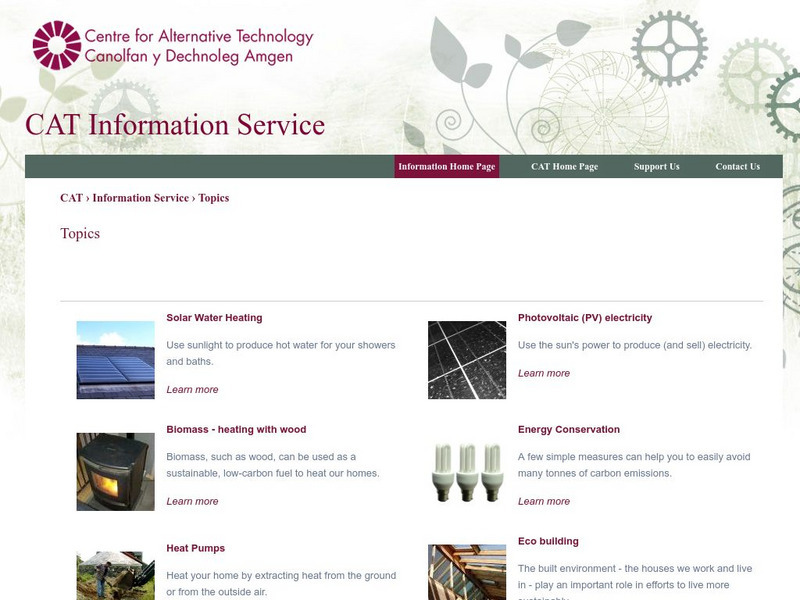

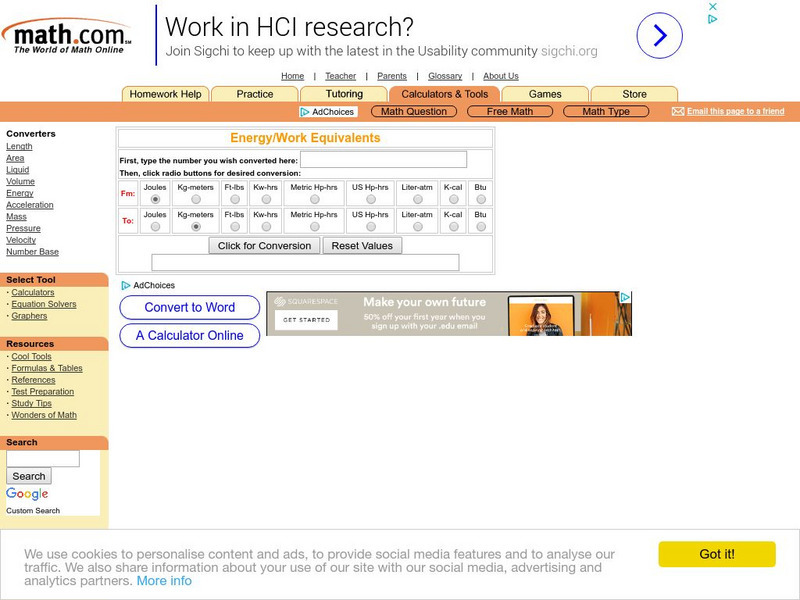




![Lesson Plan: Generate Your Own Hydropower [Pdf] Lesson Plan Lesson Plan: Generate Your Own Hydropower [Pdf] Lesson Plan](https://content.lessonplanet.com/knovation/original/361190-f16bedfd87822a19b49ab449592b0198.jpg?1661256241)
